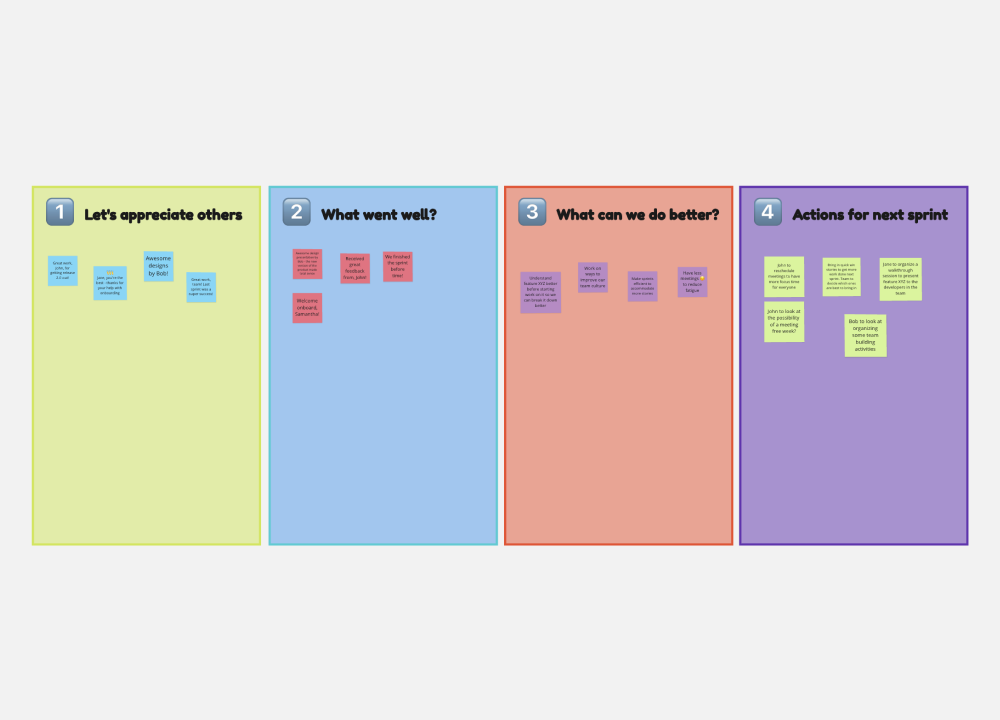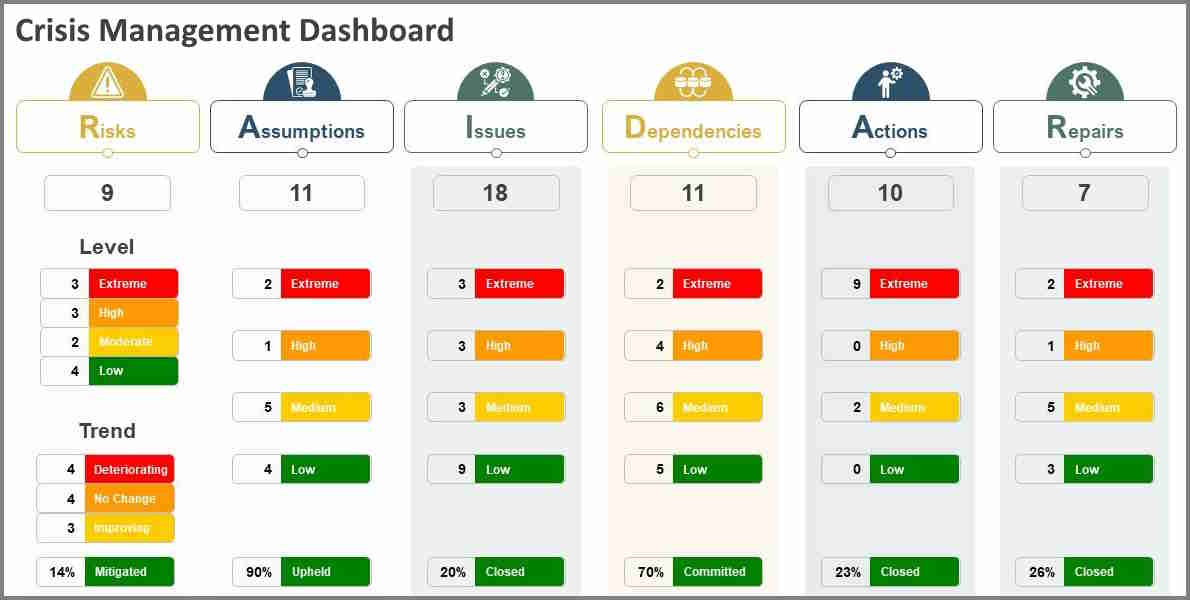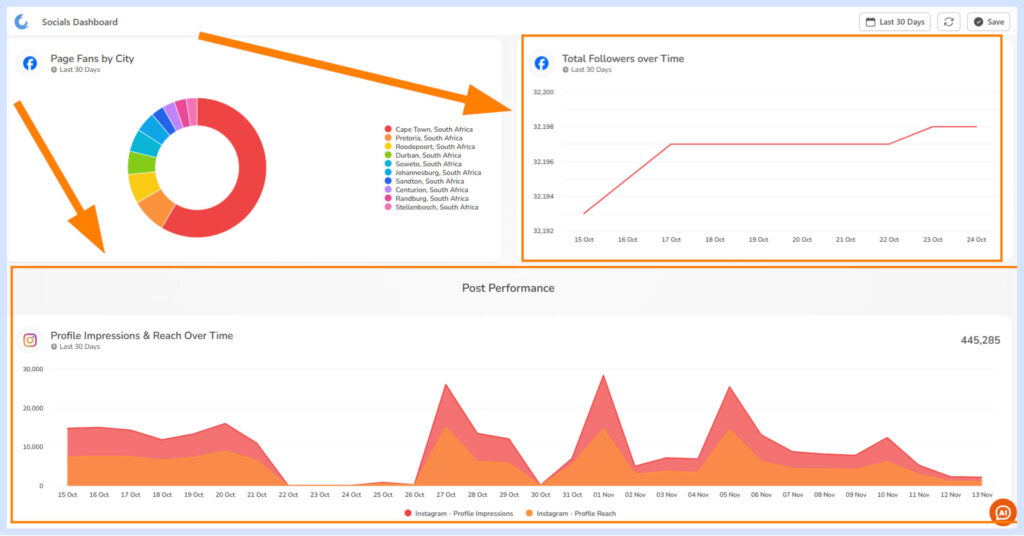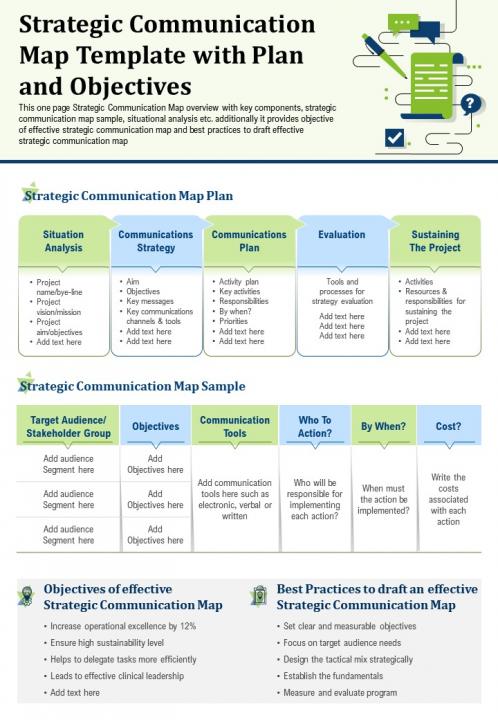Transforming Business Communication: How Effective Speaking Creates Competitive Advantage
Discover how strategic verbal communication can become your organization's most powerful differentiator
In today's hypercompetitive business landscape, the ability to communicate effectively through speaking isn't just a nice-to-have skill—it's a strategic asset that can dramatically impact an organization's market position, valuation, and long-term success. I've observed how companies that master this critical capability consistently outperform their peers across virtually every performance metric.
The Strategic Value of Effective Speaking in Business
I've consistently found that organizations where leaders and teams communicate clearly through speech achieve measurably better results than their competitors. This isn't just about polished presentations—it's about how verbal communication becomes a strategic asset that directly impacts business outcomes.

The connection between effective speaking and organizational success isn't theoretical—it's measurable. When leaders articulate vision clearly, when teams communicate efficiently, and when customer-facing staff speak with precision and empathy, the impact reverberates through every aspect of the business.
The Market Value of Clear Communication
Perhaps the most striking example of communication's market impact comes from BP's Deepwater Horizon crisis. Research shows the company lost an estimated $75 billion in market value—not just from the incident itself, but significantly from the ineffective communication that followed. When executives failed to speak with clarity, consistency, and appropriate empathy, the market responded with a devastating valuation drop.
I've observed this pattern repeatedly: companies with leaders who speak effectively during crises recover faster and maintain stronger market positions than those whose verbal communication falters under pressure. This represents a direct link between effective presentation skills and bottom-line results.
Communication Impact on Market Value
Evolution of Communication as Strategic Asset
The business world has evolved from viewing communication as a soft skill to recognizing it as a core strategic capability. Organizations now understand that effective speaking isn't just about conveying information—it's about creating alignment, building trust, and driving action in ways that create measurable competitive advantage.
This evolution has created a need for tools that can transform abstract communication concepts into clear, teachable frameworks. I've found that using PageOn.ai's visualization capabilities allows organizations to map communication flows, identify bottlenecks, and create visual models that make effective speaking patterns replicable across teams.
Core Elements of Advantage-Building Communication
In my experience working with high-performing organizations, I've identified a three-dimensional model that distinguishes ordinary business communication from the kind that builds lasting competitive advantage.
The Three-Dimensional Model of Competitive Communication
flowchart TD
A[Competitive Communication] --> B[Clarity]
A --> C[Credibility]
A --> D[Connection]
B --> B1[Simple Language]
B --> B2[Structured Messaging]
B --> B3[Visual Reinforcement]
C --> C1[Data-Backed Claims]
C --> C2[Consistent Delivery]
C --> C3[Acknowledged Limitations]
D --> D1[Emotional Intelligence]
D --> D2[Audience Adaptation]
D --> D3[Interactive Elements]
style A fill:#FF8000,stroke:#E67300,color:white
style B fill:#FFB366,stroke:#E67300
style C fill:#FFB366,stroke:#E67300
style D fill:#FFB366,stroke:#E67300
This model shows how effective speaking combines clarity (making complex ideas simple), credibility (establishing trust through evidence and consistency), and connection (creating meaningful engagement with listeners). When all three dimensions are strong, communication becomes a powerful competitive differentiator.
Communication Flows and Business Impact
Within organizations, communication flows in multiple directions—each with distinct business implications. Vertical communication (up and down the hierarchy) ensures strategic alignment and effective execution, while horizontal communication (across departments and teams) drives innovation and operational efficiency.
Organizational Communication Flows
flowchart TD
A[Executive Leadership] -->|Strategic Direction| B[Middle Management]
B -->|Performance Feedback| A
B -->|Operational Guidance| C[Front-line Employees]
C -->|Field Insights| B
D[Marketing] <-->|Product Messaging| E[Product Development]
E <-->|Technical Requirements| F[Engineering]
F <-->|Implementation Timeline| G[Customer Support]
G <-->|User Feedback| D
style A fill:#FF8000,stroke:#E67300
style B fill:#FF9A3C,stroke:#E67300
style C fill:#FFB366,stroke:#E67300
style D fill:#66BB6A,stroke:#4C994C
style E fill:#66BB6A,stroke:#4C994C
style F fill:#66BB6A,stroke:#4C994C
style G fill:#66BB6A,stroke:#4C994C
Organizations that excel at both vertical and horizontal communication create what I call "communication networks" that significantly outperform traditional siloed structures. These networks enable faster decision-making, more effective problem-solving, and greater organizational agility.
The Psychology of Persuasive Speaking
Effective business speaking leverages psychological principles that enhance persuasion and retention. Understanding these principles allows communicators to structure messages for maximum impact.
Primacy Effect
Opening statements have disproportionate impact on audience perception. Start with your strongest, most compelling point.
Recency Effect
Final messages are remembered best. Close with clear action items or powerful conclusions.
Cognitive Load Management
Audiences can process limited information. Chunk complex ideas into digestible segments with visual support.
Narrative Transportation
Stories bypass rational resistance. Use relevant narratives to illustrate key points and increase retention.
These psychological principles aren't just theoretical—they have practical applications in everyday business communication. When I work with leadership teams to improve their speaking effectiveness, we focus on structuring messages that align with how the human brain naturally processes and retains information.
Measuring Communication ROI
While many organizations struggle to quantify the return on investment for communication initiatives, I've developed a framework that connects speaking effectiveness to measurable business outcomes:
Communication ROI Metrics
This radar chart illustrates the dramatic performance gap between organizations with poor versus excellent communication practices. The data shows that effective speaking correlates strongly with improvements across multiple business metrics—from faster decision-making to higher customer satisfaction scores.
From Personal Skill to Organizational Capability
While individual speaking skills are valuable, the real competitive advantage emerges when effective communication becomes embedded in organizational culture and processes. I've helped numerous organizations make this critical transition.

The Cascade Effect of Executive Communication
How executives speak sets the tone for the entire organization. When leaders communicate with clarity, transparency, and purpose, these patterns cascade through every level of the company. Conversely, when executive communication is vague, inconsistent, or overly complex, these negative patterns similarly replicate throughout the organization.
Communication Cascade Effect
flowchart TD
A[Executive Communication] -->|Sets Tone| B[Management Communication]
B -->|Reinforces Patterns| C[Team Communication]
C -->|Influences| D[Customer Interactions]
A -->|Direct Impact| E[Company Culture]
A -->|Direct Impact| F[Strategic Alignment]
B -->|Direct Impact| G[Operational Execution]
C -->|Direct Impact| H[Innovation & Collaboration]
D -->|Direct Impact| I[Market Perception]
style A fill:#FF8000,stroke:#E67300,color:white
style B fill:#FF9A3C,stroke:#E67300
style C fill:#FFB366,stroke:#E67300
style D fill:#FFCC99,stroke:#E67300
style E fill:#66BB6A,stroke:#4C994C
style F fill:#66BB6A,stroke:#4C994C
style G fill:#66BB6A,stroke:#4C994C
style H fill:#66BB6A,stroke:#4C994C
style I fill:#66BB6A,stroke:#4C994C
This cascade effect explains why organizations with strong communication cultures consistently outperform their competitors. When effective speaking becomes part of the company's DNA, it creates alignment, reduces friction, and accelerates execution at every level.
Speaking Effectiveness and Employee Engagement
The data connecting communication quality to employee engagement is compelling. My research with organizations across industries shows a direct correlation between leaders' speaking effectiveness and key engagement metrics.
Communication Impact on Employee Engagement
Organizations with highly effective communication practices see significantly higher employee engagement across all key metrics. This translates directly to improved performance, as engaged employees deliver better customer experiences, generate more innovative ideas, and execute more efficiently.
Building Cross-Functional Communication Competencies
One of the most powerful ways to leverage communication as a competitive advantage is to build speaking competencies that bridge functional silos. When technical teams can clearly explain complex concepts to non-technical colleagues, when finance can articulate business implications to product teams, and when marketing can translate customer insights to engineering—the organization develops a unique capability for aligned action.
I've found that how to make excellent presentations across functional boundaries requires visual frameworks that create shared understanding. PageOn.ai's visualization tools are particularly valuable for creating these frameworks—allowing complex ideas to be represented visually in ways that diverse audiences can understand and act upon.
Crisis Communication as Competitive Differentiator
In moments of organizational crisis, speaking effectiveness becomes not just important but critical to survival. How leaders communicate during challenging situations can preserve—or destroy—years of carefully built competitive advantage.

The research cited earlier about BP's $75 billion market value loss following the Deepwater Horizon disaster highlights the enormous stakes of crisis communication. While the incident itself was severe, analyses suggest that the company's communication failures significantly amplified the financial damage.
Maintaining Credibility Under Scrutiny
When organizations face public scrutiny during a crisis, maintaining credibility becomes paramount. I've developed a framework for crisis communication that preserves trust even in the most challenging circumstances:
1. Immediate Acknowledgment
Quickly acknowledge the situation with appropriate gravity. Silence or delayed response erodes trust rapidly.
2. Transparent Assessment
Share what you know, what you don't know, and how you're working to gather information. Avoid speculation.
3. Authentic Empathy
Express genuine concern for affected stakeholders. Scripted or detached responses damage credibility.
4. Clear Accountability
Articulate who is responsible for addressing the situation and what specific actions are being taken.
5. Consistent Updates
Provide regular, consistent updates even when there are no major developments to report.
6. Forward Focus
Articulate concrete steps being taken to resolve the issue and prevent recurrence.
Organizations that follow this framework maintain significantly more credibility during crises than those that communicate reactively or defensively. This credibility preservation directly impacts how quickly the organization can recover and resume normal operations.
Real-Time Communication Strategies
In today's digital environment, crisis communication happens in real-time across multiple channels. Organizations need structured approaches for managing this complexity while maintaining message consistency.
Crisis Communication Decision Tree
flowchart TD
A[Crisis Event Occurs] --> B{Is it public yet?}
B -->|Yes| C[Activate Full Response]
B -->|No| D[Prepare Proactive Statement]
C --> E{Severity Level?}
E -->|High| F[CEO-Led Response]
E -->|Medium| G[Senior Executive Response]
E -->|Low| H[Department Head Response]
F --> I[All-Channel Communication]
G --> J[Primary Channel Communication]
H --> K[Limited Channel Communication]
D --> L[Monitor Situation]
L --> M{Has it become public?}
M -->|Yes| C
M -->|No| N[Continue Preparation]
style A fill:#FF8000,stroke:#E67300,color:white
style B fill:#FF9A3C,stroke:#E67300
style C fill:#FF9A3C,stroke:#E67300
style D fill:#FF9A3C,stroke:#E67300
style E fill:#FFB366,stroke:#E67300
style F fill:#FFB366,stroke:#E67300
style G fill:#FFB366,stroke:#E67300
style H fill:#FFB366,stroke:#E67300
style I fill:#FFCC99,stroke:#E67300
style J fill:#FFCC99,stroke:#E67300
style K fill:#FFCC99,stroke:#E67300
style L fill:#FFB366,stroke:#E67300
style M fill:#FF9A3C,stroke:#E67300
style N fill:#FFB366,stroke:#E67300
This decision tree illustrates how organizations can systematically approach crisis communication decisions. By having predetermined response patterns based on crisis type and severity, companies can respond more quickly and consistently—preserving competitive positioning even during challenging situations.
The Speed-Accuracy Balance
One of the most difficult aspects of crisis communication is balancing the need for speed with the requirement for accuracy. In my work with organizations facing public scrutiny, I've found that this balance is critical to maintaining credibility.
For those who struggle with public speaking anxiety, particularly during high-pressure situations, having structured frameworks and preparation techniques can make a significant difference. Learning to overcome fear of public speaking becomes especially important for leaders who may need to address stakeholders during crisis situations.
Speed vs. Accuracy in Crisis Communication
This scatter plot reveals an important pattern: effective crisis responses maintain a careful balance between speed and accuracy. The most successful organizations respond quickly but with sufficient accuracy to maintain credibility. Responses that are too slow (even if highly accurate) or too inaccurate (even if very fast) both fail to preserve competitive positioning.
Technology's Role in Elevating Speaking Impact
Modern technology is transforming how organizations approach business communication, providing tools that significantly enhance speaking effectiveness and amplify competitive advantage.

AI-Enhanced Preparation Tools
AI is revolutionizing how speakers prepare for high-stakes communication situations. Tools now exist that can analyze audience characteristics, recommend optimal message framing, and even provide real-time feedback on delivery elements like pacing, clarity, and engagement.
For those looking to leverage AI in their presentation development, ChatGPT presentation skills can provide valuable assistance in structuring content, generating compelling narratives, and identifying powerful examples to illustrate key points.
AI-Enhanced Speaking Preparation Process
flowchart LR
A[Content Development] --> B[AI Analysis]
B --> C[Refinement]
C --> D[Practice]
D --> E[Feedback]
E --> F[Delivery]
A1[Key Messages]:::input --> A
A2[Audience Analysis]:::input --> A
A3[Supporting Data]:::input --> A
B1[Message Clarity]:::output --> B
B2[Engagement Prediction]:::output --> B
B3[Comprehension Analysis]:::output --> B
C1[Visual Support]:::process --> C
C2[Narrative Enhancement]:::process --> C
C3[Technical Simplification]:::process --> C
D1[Delivery Simulation]:::process --> D
D2[Virtual Audience]:::process --> D
E1[Pacing Feedback]:::output --> E
E2[Clarity Metrics]:::output --> E
E3[Engagement Scoring]:::output --> E
classDef input fill:#FFB366,stroke:#E67300
classDef process fill:#FF9A3C,stroke:#E67300
classDef output fill:#FF8000,stroke:#E67300,color:white
style A fill:#66BB6A,stroke:#4C994C
style B fill:#66BB6A,stroke:#4C994C
style C fill:#66BB6A,stroke:#4C994C
style D fill:#66BB6A,stroke:#4C994C
style E fill:#66BB6A,stroke:#4C994C
style F fill:#66BB6A,stroke:#4C994C
This flowchart illustrates how AI tools are transforming the speaking preparation process. By providing data-driven insights at each stage, these technologies help speakers create more impactful, memorable communications.
Visual Thinking Technologies
Visual thinking technologies are particularly powerful for enhancing verbal communication. When complex ideas are visualized effectively, speakers can communicate them more clearly and audiences retain them more completely.
For educators and trainers, effective slides for language teaching can dramatically improve comprehension and retention. The same principles apply in business contexts—visual support significantly enhances the impact of verbal communication.
PageOn.ai: Transforming Speaking Points into Visual Narratives
PageOn.ai represents a significant advancement in how organizations can leverage visual thinking to enhance speaking effectiveness. The platform allows users to transform complex speaking points into clear, compelling visual narratives that support and amplify verbal communication.
PageOn.ai Visualization Impact
The data is compelling: when verbal communication is supported by effective visualization, its impact increases dramatically across all key metrics. PageOn.ai's tools make this kind of visualization accessible even to those without design expertise.
AI Blocks for Structured Impromptu Speaking
One of the most powerful features of PageOn.ai is its AI Blocks functionality, which helps speakers structure their thoughts quickly for impromptu speaking situations. This capability is particularly valuable in competitive business environments where leaders often need to communicate effectively with minimal preparation time.
AI Blocks for Impromptu Speaking Structure
flowchart TD
A[Impromptu Speaking Situation] --> B{Type of Response?}
B -->|Problem Solution| C[AI Block: Problem-Solution]
B -->|Data Analysis| D[AI Block: Data Narrative]
B -->|Strategic Direction| E[AI Block: Strategy Framework]
C --> C1[Problem Definition]
C --> C2[Impact Assessment]
C --> C3[Solution Approach]
C --> C4[Implementation Path]
D --> D1[Data Context]
D --> D2[Key Patterns]
D --> D3[Implications]
D --> D4[Action Recommendations]
E --> E1[Current Position]
E --> E2[Target State]
E --> E3[Strategic Pillars]
E --> E4[Success Metrics]
style A fill:#FF8000,stroke:#E67300,color:white
style B fill:#FF9A3C,stroke:#E67300
style C fill:#FFB366,stroke:#E67300
style D fill:#FFB366,stroke:#E67300
style E fill:#FFB366,stroke:#E67300
These AI Blocks provide ready-made structures that speakers can quickly populate with relevant content, ensuring that even impromptu communication remains clear, structured, and impactful. This capability gives organizations a significant advantage in dynamic business environments where effective real-time communication is essential.
Measuring and Optimizing Speaking Effectiveness
To truly leverage speaking as a competitive advantage, organizations need systematic approaches for measuring and continuously improving communication effectiveness.

Key Performance Indicators for Communication
My research has identified several metrics that effectively measure speaking impact within organizations:
| Metric | Description | Measurement Approach | Target Range |
|---|---|---|---|
| Message Clarity Score | How clearly key messages are understood by target audiences | Post-communication surveys with comprehension questions | 80-100% |
| Action Alignment Rate | Percentage of audience taking intended actions after communication | Behavior tracking metrics specific to communication goals | 70-90% |
| Information Flow Velocity | Speed at which critical information moves through organization | Time tracking from information origin to key stakeholder awareness | < 24 hours |
| Message Consistency Index | Alignment of messaging across different speakers and channels | Content analysis comparing key message points across communications | 90-100% |
| Feedback Response Rate | How effectively communication generates two-way dialogue | Tracking questions, comments, and engagement after communications | 40-60% |
Organizations that systematically track these metrics gain valuable insights into their communication effectiveness and can make data-driven improvements over time.
Speaking Clarity and Business Performance
The correlation between speaking clarity and business performance is particularly strong. My research across multiple industries shows that organizations with higher communication clarity scores consistently outperform their competitors on key business metrics.
Communication Clarity Impact on Business Performance
This chart shows the clear relationship between communication clarity and key business metrics. As clarity increases, we see corresponding improvements in revenue growth, customer retention, and employee engagement—demonstrating the tangible business value of effective speaking.
Tools for Analyzing Communication Patterns
Modern analytics tools allow organizations to identify communication patterns that may be helping or hindering performance. By analyzing speaking patterns across different teams and contexts, companies can identify best practices and areas for improvement.
PageOn.ai's analytics capabilities are particularly valuable in this regard, as they allow organizations to visualize communication patterns and identify opportunities for improvement. The platform's AI-powered analysis can identify patterns that might not be apparent through traditional assessment methods.
Creating Feedback Loops
Continuous improvement in speaking effectiveness requires well-designed feedback loops. Organizations that excel in this area implement systematic processes for gathering, analyzing, and acting on communication feedback.
Communication Feedback Loop
flowchart TD
A[Communication Event] --> B[Multi-Channel Feedback Collection]
B --> C[Data Analysis]
C --> D[Insight Generation]
D --> E[Improvement Planning]
E --> F[Skill Development]
F --> G[Enhanced Communication]
G --> A
B1[Audience Surveys]:::input --> B
B2[Digital Engagement Metrics]:::input --> B
B3[Behavioral Observation]:::input --> B
C1[Pattern Identification]:::process --> C
C2[Benchmark Comparison]:::process --> C
D1[Strength Areas]:::output --> D
D2[Improvement Opportunities]:::output --> D
D3[Priority Ranking]:::output --> D
classDef input fill:#FFB366,stroke:#E67300
classDef process fill:#FF9A3C,stroke:#E67300
classDef output fill:#FF8000,stroke:#E67300,color:white
style A fill:#66BB6A,stroke:#4C994C
style B fill:#66BB6A,stroke:#4C994C
style C fill:#66BB6A,stroke:#4C994C
style D fill:#66BB6A,stroke:#4C994C
style E fill:#66BB6A,stroke:#4C994C
style F fill:#66BB6A,stroke:#4C994C
style G fill:#66BB6A,stroke:#4C994C
This continuous feedback loop ensures that speaking effectiveness improves over time, creating a sustainable competitive advantage that competitors find difficult to replicate.
Implementation: Building Your Communication Advantage Strategy
Transforming speaking effectiveness into a true competitive advantage requires a systematic implementation approach. I've developed a proven methodology that organizations can follow to build their communication advantage strategy.

Assessment Framework
The first step is to conduct a comprehensive assessment of current organizational speaking effectiveness. This assessment should evaluate communication at multiple levels:
Executive Communication Assessment
- Strategic message clarity
- Vision articulation effectiveness
- Crisis communication readiness
- Stakeholder engagement capability
Management Communication Assessment
- Strategic-to-tactical translation
- Team alignment communication
- Performance feedback effectiveness
- Cross-functional collaboration
Team Communication Assessment
- Meeting effectiveness
- Information sharing efficiency
- Problem-solving communication
- Innovation dialogue
External Communication Assessment
- Customer interaction quality
- Partner communication effectiveness
- Market messaging clarity
- Public relations capability
This comprehensive assessment provides a baseline understanding of current capabilities and identifies specific areas for improvement.
Implementation Methodology
Based on the assessment results, organizations can implement a structured program to build speaking effectiveness:
Speaking Advantage Implementation Roadmap
flowchart TD
A[Phase 1: Foundation] --> B[Phase 2: Capability Building]
B --> C[Phase 3: Integration]
C --> D[Phase 4: Optimization]
A --> A1[Executive Alignment]
A --> A2[Baseline Assessment]
A --> A3[Strategy Development]
A --> A4[Success Metrics Definition]
B --> B1[Leadership Communication Training]
B --> B2[Message Architecture Development]
B --> B3[Communication Playbook Creation]
B --> B4[Feedback System Implementation]
C --> C1[Process Integration]
C --> C2[Technology Enablement]
C --> C3[Cross-Functional Application]
C --> C4[Cultural Reinforcement]
D --> D1[Advanced Analytics]
D --> D2[Continuous Improvement]
D --> D3[Competitive Benchmarking]
D --> D4[Innovation Acceleration]
style A fill:#FF8000,stroke:#E67300,color:white
style B fill:#FF9A3C,stroke:#E67300
style C fill:#FFB366,stroke:#E67300
style D fill:#FFCC99,stroke:#E67300
This phased implementation approach ensures that organizations build speaking capabilities systematically, with each phase creating a foundation for the next level of advancement.
Resource Allocation
Implementing a speaking advantage strategy requires thoughtful resource allocation. Organizations should prioritize investments based on potential impact:
Communication Investment Prioritization Matrix
This prioritization matrix helps organizations allocate resources efficiently, focusing first on high-impact, high-feasibility initiatives that will deliver the greatest competitive advantage.
Implementation Timeline
Building a true communication advantage is a journey that unfolds over time. A typical implementation timeline might look like this:
| Timeframe | Focus Areas | Key Milestones |
|---|---|---|
| Months 1-3 | Assessment, Strategy, Executive Alignment | Baseline established, strategy approved, executive commitment secured |
| Months 4-6 | Leadership Development, Framework Creation | Leadership training completed, communication playbook developed |
| Months 7-12 | Organization-Wide Implementation, Technology Integration | All teams trained, technology platforms deployed, initial metrics improvement |
| Year 2 | Refinement, Advanced Applications, Cultural Integration | Significant metrics improvement, communication excellence becoming cultural norm |
| Year 3+ | Innovation, Competitive Advantage Expansion, Industry Leadership | Communication as recognized competitive differentiator, industry benchmarking |
This timeline provides a realistic framework for building communication capabilities over time, recognizing that sustainable competitive advantage requires ongoing commitment and development.
Visual Roadmaps for Transformation
Creating visual roadmaps helps organizations communicate the communication transformation journey to stakeholders. PageOn.ai's visualization capabilities are particularly valuable for creating these roadmaps, making abstract concepts concrete and actionable.
By following this implementation approach, organizations can systematically build speaking effectiveness as a sustainable competitive advantage that delivers measurable business results.
Transform Your Communication Into Competitive Advantage
Ready to elevate your organization's speaking effectiveness? PageOn.ai provides the visual tools you need to transform complex communication concepts into clear, compelling frameworks that drive business results.
Start Creating with PageOn.ai TodayThe Future of Communication as Competitive Advantage
As we've explored throughout this guide, effective speaking isn't just a nice-to-have skill—it's a strategic capability that creates measurable competitive advantage. Organizations that systematically develop this capability outperform their competitors across virtually every business metric.
The research is clear: companies that invest in communication excellence see higher employee engagement, faster decision-making, better customer relationships, and more effective crisis management. These advantages translate directly to improved financial performance and market position.
In today's complex business environment, the ability to communicate clearly and effectively is more important than ever. By leveraging modern tools like PageOn.ai, organizations can transform abstract communication concepts into visual frameworks that enhance understanding and drive action.
I encourage you to begin your journey toward communication excellence today. Start by assessing your current capabilities, identifying key improvement opportunities, and developing a systematic plan for building speaking effectiveness as a sustainable competitive advantage.
The organizations that master this critical capability will be the ones that thrive in an increasingly competitive global marketplace. Will yours be one of them?
You Might Also Like
Revolutionizing Document Conversion: Drag-and-Drop Solutions for Workflow Efficiency
Discover how drag-and-drop document conversion solutions transform workflow efficiency, reduce errors, and save 60%+ time. Learn implementation strategies and future trends.
Maximizing Conversion: Strategic Free Trial Design for AI Presentation Platforms
Discover proven strategies for designing effective free trials for AI presentation platforms. Learn how to balance feature access, create compelling user journeys, and drive conversions.
10 Hidden Google Workspace Marketplace Gems for Transforming Your Presentations
Discover 10 powerful Google Workspace Marketplace add-ons that will revolutionize how you create, deliver, and collaborate on presentations. Unlock hidden gems for presenters.
PowerPoint Compatibility Solutions: Cross-Version Presentation Success Guide
Discover effective solutions for PowerPoint compatibility issues across versions. Learn to preserve animations, formatting, and graphics while ensuring seamless cross-platform presentation success.
